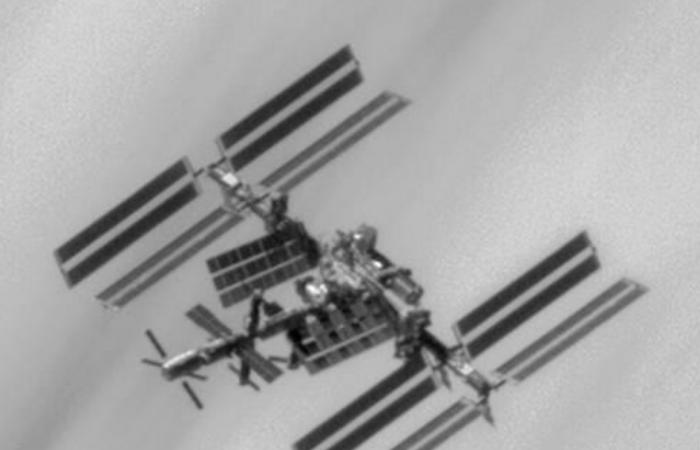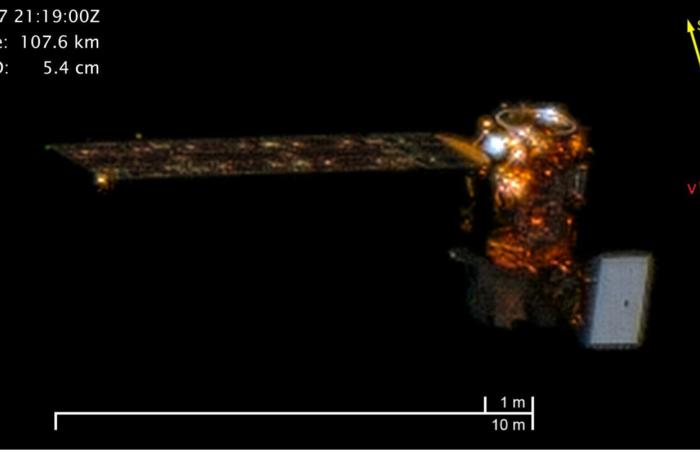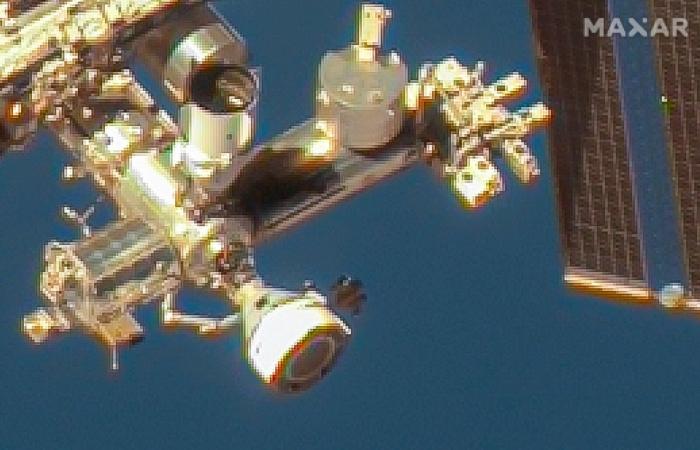The International Space Station (ISS) seen by the WorldView-3 satellite on June 7, 2024 after docking
of Boeing’s Starliner spacecraft. Image credit: Maxar
This is a rather exceptional satellite image that the company Maxar published on June 13. It shows the International Space Station as seen by the Worldview-3 satellite.
Exceptional?
When Earth observation satellites have their heads in the air…
Firstly because it is not so common for Earth observation satellites to do anything other than observe the Earth.
I have already published on this blog images of the Moon, Mars or Jupiter seen by observation satellites. These are either images acquired to calibrate the instruments or images intended to show the agility of the satellite (its ability to rotate on itself to aim at a particular target) and the performance of its instrument.
On the other hand, good images of the ISS are quite rare. I haven’t seen many. The first one which impressed me a lot was presented by CNES. It was part of special images taken during the flight acceptance of the Pléiades-1A satellite a few months after the launch in December 2011. To my knowledge, it was a first.
At the time, the ATV Edoardo Amaldi, launched in March 2012, was docked to the ISS and is clearly identifiable on the image of the Pléiades-1A satellite.
In 2012, another unusual photo: the ATV Edoardo Amaldi docked with the ISS immortalized by the Pléiades-1A satellite
during in-flight acceptance operations. Image credit: CNES
Satellites playing hide and seek
There are other satellite images “photographed” by other satellites, for example Envisat when it failed in 2012 to try to determine the attitude of the large European satellite in its orbit and help understand what is happening. was passed or the SPOT 5 satellite on the occasion of the tenth anniversary of its launch, also in 2012.
In all cases, this type of image requires special work from the teams so that the line of sight of the satellite instrument follows the trajectory of the targeted object. Not so simple when the satellite is in a polar orbit while the ISS orbits the Earth with an inclination of 51.6°.
To achieve this feat with two objects traveling at 28,000 km/h around the Earth, you have to be as skillful as Henri Cartier-Bresson who had the art of perfect framing and triggering at the decisive moment.
At the time it acquires this image, the satellite is 276 km away from the ISS. This is more than twice as close as the altitude of its orbit around the Earth (around 620 km): its resolution on the ground being 31 cm (in panchromatic mode) and 124 cm for colors, details visible on This image of the ISS has a size of around 14 cm.
Maxar has already produced other images of this type, for example an image of the American satellite Landsat-8, in its orbit at an altitude of 705 km in October 2022. The distance is even shorter: between 91 and 130 km during the acquisition of the image sequence, allowing a remarkable level of detail (around 5 cm in panchromatic). WorldView-3 is practically “right below” Landsat 8 as it takes this image.
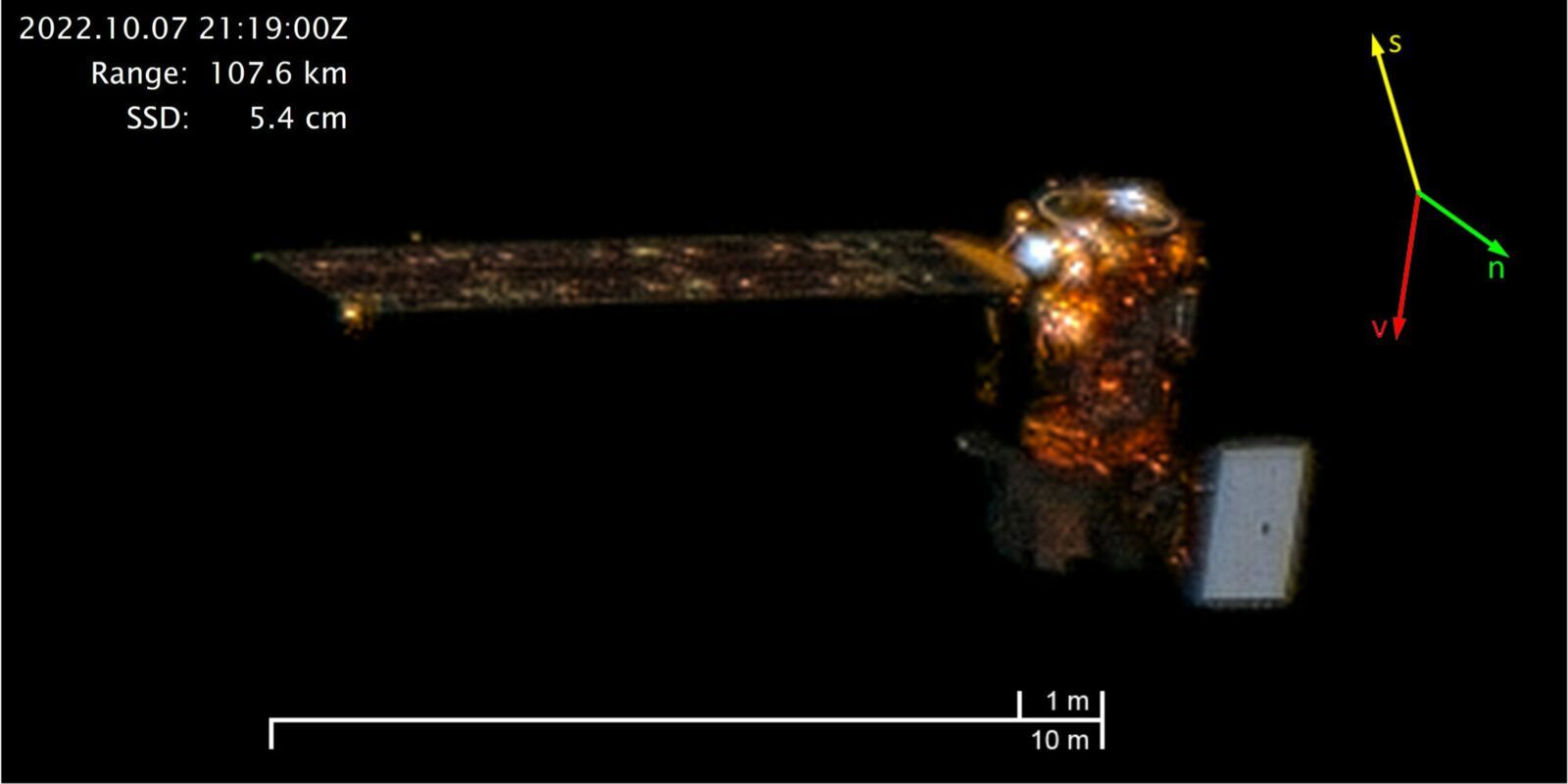
Sequence of American satellite images acquired by the Worldview-3 satellite on October 7, 2022
between 21:18 and 21:20 UTC. Click on the image to see the animation. Image credit: Maxar
The Maxar company calls this technique “ Non-Earth Imaging » (NEI).
Beyond the spectacular images, it is quite easy to understand the interest of this imaging technique as space becomes more and more crowded, with an increase in the probability of collision with space debris, and as it is increasingly question of militarization or even a new theater of operation and “weaponization” of space. In English, we talk about Space Domain Awareness mission, Space Situational Awareness…
Family portrait of cargo ships and spaceships docked at the ISS
In fact, this image is all the more exceptional because it shows the International Space Station in a unique configuration: there are six spacecraft of five different types, three of which are for manned flights:
- the cargo ship Cygnus-NG 20 “Patricia Robertson” (launched on January 30 and docked with the ISS since February 1),
- the two cargo ships Progress MS-26 (launched on February 16 and docked since February 17) and Progress MS-27 (launched on May 30 and docked since June 1),
- the ship Crew Dragon Endeavor for the SpaceX Crew 8 mission (launched on March 4 and docked since March 5),
- the ship Soyuz MS-25 (launched on March 23, 2024 and docked since March 25),
- and the CST-100 Starliner from Boeing (launched on June 5 and docked with the American Harmony module since June 6 at the end of the day).
The Starliner is apparently in no hurry to leave: NASA has announced a new postponement of its return to Earth to carry out new checks of the propulsion system after the detection of Helium leaks and anomalies on 5 of the 28 engines ensuring Starliner trajectory control.
Originally scheduled for June 18, the return has been postponed twice and is now scheduled for early July.
I don’t think the two astronauts who arrived aboard the Starliner, Sunita Williams and Barry “Butch” Wilmore, are going to break records for length of time in space, but I hope they have packed enough spare clothes and took long-term parking at Cape Canaveral…
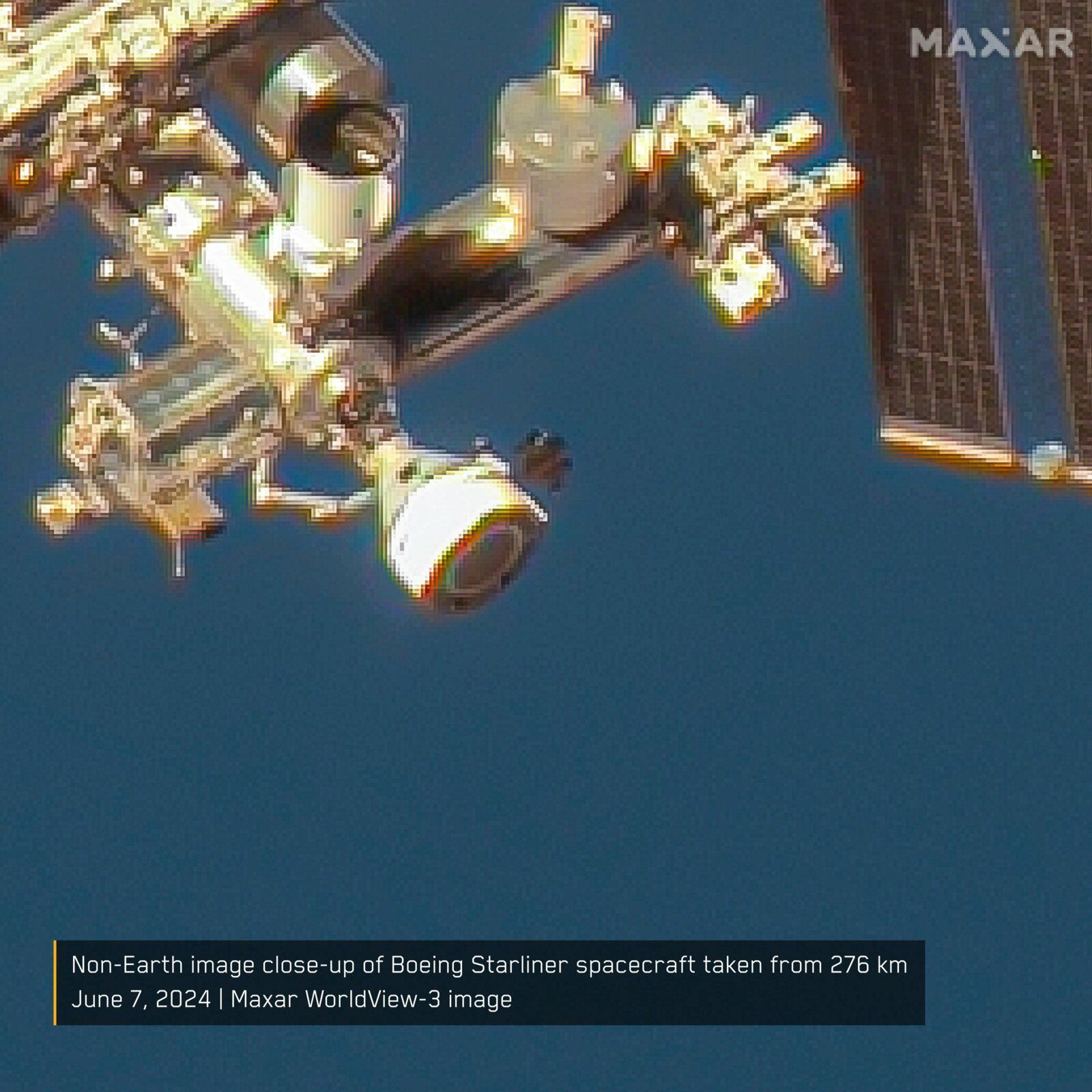
The International Space Station (ISS) seen by the WorldView-3 satellite on June 7, 2024 after docking
of Boeing’s Starliner spacecraft. Zoom on the Starliner ship. Image credit: Maxar
Reassuring state of health for Worldview-3…
Regarding the Worldview-3 satellite, the publication of this image by Maxar shows that the Worldview-3 satellite appears to be fully operational again, at least making unusual maneuvers.
The satellite had stopped transmitting images since May 18, but Maxar engineers managed to circumvent or repair the failure.
Maxar launched the first two new generation Worldview Legion satellites on a Falcon rocket in early May. They offer an identical resolution (30 cm) and the constellation should eventually include six identical satellites.
Maxar announces a high revisit capacity (15 per day) with its entire satellite fleet.
Maxar company video illustrating the ability to observe and revisit the constellation once
Worldview Legion deployed in orbit. Credit: Maxar
Learn more:


